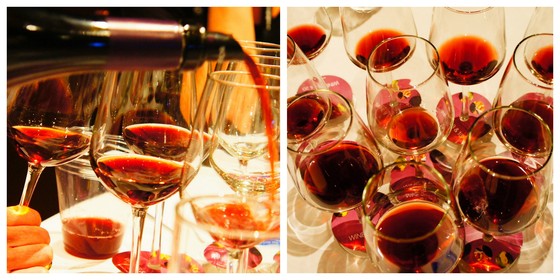In Burgundy, each vineyard plot, each climat, each appellation produces a unique wine; it takes humility to accept what the vintage gives you. (In Bordeaux, on the other hand, an estate bottling is produced by blending several grape varieties; it takes an element of genius to produce a successful wine.) Granted, this simplified view applies only to the greatest wines, but those of us who love Burgundy want to learn everything we can about Burgundy: its soil, its geography, its weather, its pricing. We tend to approach every bottle as a mystery, every cork as if it were a ticking bomb, . Sometimes we lack confidence and pour the first glass with trepidation: "What if the wine's too young?" or "What if it's over the hill?" At other times we swagger and bluster: "It's a 1999 Richebourg, after all."
Overlay the uncertainties of Burgundy with another truism, however: wine rewards patience. And the better the wine, the greater the reward.
This holds true for most good wines, and nowhere more than in Burgundy, but finding and tasting perfectly stored older vintages usually requires a costly trip to France and expensive meals in restaurants with extravagantly priced cellars.
To confirm the quality of Burgundy's finest wines, the Bougogne Wine Board (BIVB for short, the professional association of wine growers) organizes events in various overseas markets. A delegation of Burgundian vintners parachuted into Seattle this week with a couple dozen of their best bottles, no longer for sale on the open market, carefully extracted from cobwebbed cellars.
What started out as bright, cherry-flavored wines, wide-eyed children with youthful promise, have become, after 8, 12, or even 18 years, mature and sexy. Stunning aromatics, floral, earthy, leathery, sultry and seductive.
Not cheap, this road show, with many of the older vintages being poured from magnums, but it's a good investment for the Burgundy growers. The USA is their leading export market, first by revenues (about $200 million), second by volume (over 16 million bottles). Surprisingly, two thirds of the Burgundy consumed in the US is white wine, but if you've got a case of old Chablis or Pouilly-Fuissé lying in your cellar, you'll be surprised when you get around to opening a bottle: the ten-year-old whites were astonishingly fresh.
And as for the reds, it is hard to imagine a lovelier wine than the 2002 Beaune 1er Cru from Domaine Chanson's Clos des Fèves: whole cluster fermentation, old berries, leather, earthy; or another Beaune 1er Cru, this one the 1996 Clos des Mouches from Drouhin. Still seductive, "it will age forever," said one of our French hostss. No argument from me.

Leave a comment